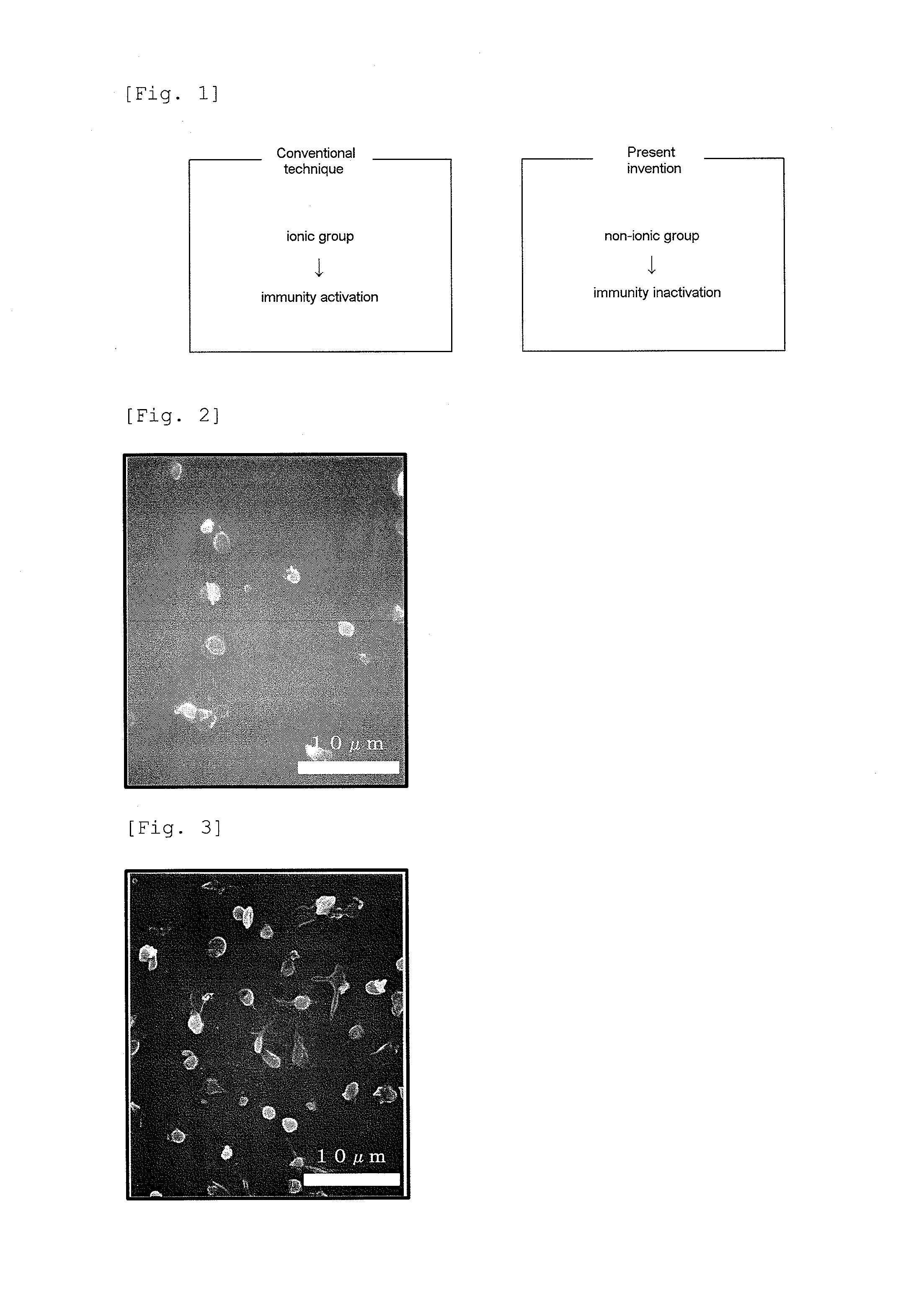(METH)acrylate copolymer, a method for producing the same and a medical device
- Summary
- Abstract
- Description
- Claims
- Application Information
AI Technical Summary
Benefits of technology
Problems solved by technology
Method used
Image
Examples
example 1
[0113]To a reaction apparatus equipped with a reflux condenser and capable of stirring, 15.1 g of methoxytriethylene glycol acrylate (MTEGA) (made by SHIN-NAKAMURA CHEMICAL CO., LTD.), 29.7 g of 2-ethylhexyl acrylate (EHA) (made by TOKYO CHEMICAL INDUSTRY CO., LTD.), 0.0447 g of azobisisobutyronitrile (AIBN) (made by Wako Pure Chemical Industries, Ltd.), and 178.9 g of ethanol (made by TOKYO CHEMICAL INDUSTRY CO., LTD.) were added, and a polymerization reaction was performed at 80° C. for 20 hours. The inside of the reaction apparatus was replaced with nitrogen in advance, and further, nitrogen bubbling was continued during the polymerization reaction. After completion of the polymerization reaction, a polymerization solvent was removed by evaporation for 4 days under the conditions of 60° C. and 1 Torr, and a crude (meth)acrylate copolymer was obtained. 2 g of the obtained crude (meth)acrylate copolymer was dissolved in 2 g of tetrahydrofuran and dropped in 20 g of a poor solvent (...
example 2
[0114]The same operation as in Example 1 was carried out, and a crude (meth)acrylate copolymer was obtained. 2 g of the obtained crude (meth)acrylate copolymer was dissolved in 2 g of tetrahydrofuran and dropped in 20 g of a poor solvent (weight ratio of methanol / water was set to 85 / 15) under stirring using a Pasteur pipette. The operation of recovering the precipitate by decantation, adding the same weight of tetrahydrofuran for dissolution, and dropping the mixture into the poor solvent was repeated twice, thereafter performing drying at reduced pressure for 4 days under the condition of a reduced pressure at 0.1 Torr at 60° C. to thereby obtain a purified product 2.
example 3
[0115]The same operation as in Example 1 was carried out, and a crude (meth)acrylate copolymer was obtained. 2 g of the obtained crude (meth)acrylate copolymer was dissolved in 2 g of tetrahydrofuran and dropped in 20 g of a poor solvent (weight ratio of methanol / water was set to 90 / 10) under stirring using a Pasteur pipette. The operation of recovering the precipitate by decantation, adding the same weight of tetrahydrofuran for dissolution, and dropping the mixture into the poor solvent was repeated twice, thereafter performing drying at reduced pressure for 4 days under the condition of a reduced pressure at 0.1 Torr at 60° C. to thereby obtain a purified product 3.
PUM
| Property | Measurement | Unit |
|---|---|---|
| Glass transition temperature | aaaaa | aaaaa |
| Percent by mole | aaaaa | aaaaa |
| Weight ratio | aaaaa | aaaaa |
Abstract
Description
Claims
Application Information
 Login to View More
Login to View More - R&D
- Intellectual Property
- Life Sciences
- Materials
- Tech Scout
- Unparalleled Data Quality
- Higher Quality Content
- 60% Fewer Hallucinations
Browse by: Latest US Patents, China's latest patents, Technical Efficacy Thesaurus, Application Domain, Technology Topic, Popular Technical Reports.
© 2025 PatSnap. All rights reserved.Legal|Privacy policy|Modern Slavery Act Transparency Statement|Sitemap|About US| Contact US: help@patsnap.com



